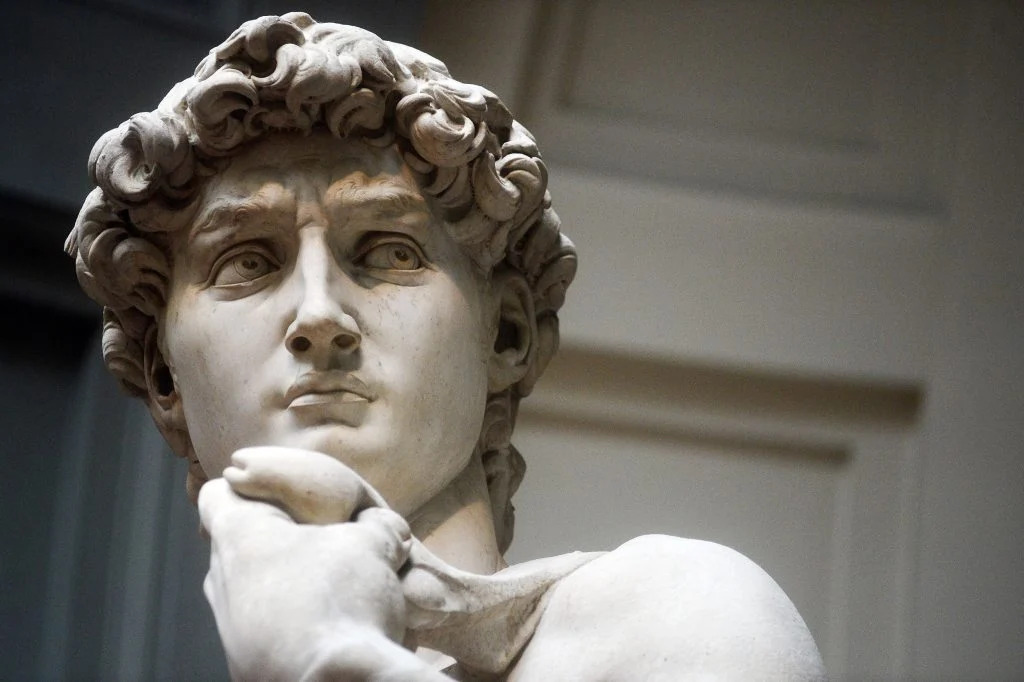Michelangelo’s David, towering over 16 feet and weighing more than 12,000 pounds, stands as a testament to Renaissance artistry and civic symbolism. Created by a 26-year-old Michelangelo, this marble colossus continues to captivate viewers with its intricate detail and profound narrative.
The Commission and Evolution of David
In the summer of 1501, Michelangelo was commissioned to sculpt David for the roofline of the Florence Cathedral. However, upon completion in 1504, a panel of renowned artists including Leonardo da Vinci and Sandro Botticelli, decided that David should be placed at the entrance of the Palazzo Vecchio, the seat of Florence’s civic government. This decision transformed David from a religious figure into a symbol of Florentine liberty and political freedom, representing the city’s resilience against larger adversaries such as Milan and Naples.
From Civic Symbol to Art Object
In 1873, David was moved from the Piazza della Signoria to the Galleria dell’Accademia to preserve it from environmental damage. A replica now stands in the original location, while the authentic statue resides safely indoors, drawing millions of visitors annually.
Michelangelo’s Resourcefulness with Marble
Michelangelo was renowned for his meticulous selection of marble, often choosing it personally from quarries in Carrara and Pietrasanta. Surprisingly, David was carved from a discarded block of marble that had been previously worked on and abandoned by two other sculptors, Agostino di Duccio and Antonio Rossellino, due to its imperfections.
Overcoming Marble Imperfections
Despite the marble’s flaws, Michelangelo succeeded in creating a masterpiece. Scientific analysis in 2005 revealed that the marble contains microscopic holes, making it susceptible to faster degradation. This challenging material influenced the sculpture’s design, leading to David’s leaner physique compared to other Michelangelo works.
Gilded Elements of David
Originally, parts of David were gilded, including the sling and a victory garland on his head. This gilding has since been lost over time. Additionally, in response to the conservative sentiments of the period, a metal garland was added to cover David’s genitalia shortly after its installation, though it was later removed.
Conservation Efforts
During conservation between 2002 and 2004, scientists discovered rough surfaces on the tree trunk and sling, indicating where the gold was applied. These efforts help preserve the statue for future generations while shedding light on Michelangelo’s original vision.
Replicas and Influence of David
The influence of Michelangelo’s David extends beyond its original marble form. In 1847, a full-sized plaster replica was created to test various locations for the statue due to concerns about its degradation. This replica, made by royal cast maker Clemente Papi, is the only complete mold ever made from the original statue.
Global Reach of David
In 1856, another full-sized plaster replica was sent to England as a gift to Queen Victoria. This replica, displayed at the Victoria and Albert Museum in London, underscores David’s enduring legacy and global appeal.
The Master
Michelangelo’s David remains a pinnacle of Renaissance sculpture, embodying the artistic prowess and civic pride of Florence. From its resourceful creation out of a flawed marble block to its multiple relocations and global replicas, David’s story is as monumental as the statue itself. The continuous efforts to preserve and study this masterpiece ensure that its legacy endures, inspiring future generations with its timeless beauty and historical significance.

